Plants ordered now will ship Spring 2026 🙂
Tulsi, Krishna — Holy Basil, Shyama Tulasi (Ocimum tenuiflorum) potted plant, organic
Price range: $8.50 through $21.95
Family: Mint (Lamiaceae)
Hardy to Zones 10 to 12, otherwise grown as a potted plant and brought in for the winter
(Tea basil from India, Shyama Tulasi, Krishna Tulsi) Perennial tea basil originally from India. The plants are grown at our farm here in the USA, in seclusion, in order to produce the seed offered here. An outstanding cultivar for producing the true tropical-type tulsi tea (as opposed to tea of temperate tulsi). Leaves dark purple. Many people prefer this dark-colored cultivar. According to ancient folklore, the Tulsi (tulasi) plant is a manifestation of the Divine Mother on Earth, for the benefit of all creation. Tastes good and provides gentle stimulation to body, mind and spirit. Growing tea basils brings many blessings to the household! The tea made from this plant is very satisfying, with taste and aroma most appealing. Traditional usage (Ayurveda): stress, anxiety, heart disease, arthritis, diabetes, and dementia. Drinking tulsi tea in the morning is a fantastic way to get started. If you want to be an herbalist and are afraid you might tell somebody to take the wrong thing, then tell them to drink tulsi tea and you will be right every time. Plant prefers a warm garden exposure, with rich yet well-drained soil and frequent watering. Space plants 2 feet apart. If growing indoors, give at least 6 hours of light daily, do not overwater, and make sure there is good air exchange to keep the plant healthy. Space plants 2 feet apart.
Potted plant, Certified Organically Grown

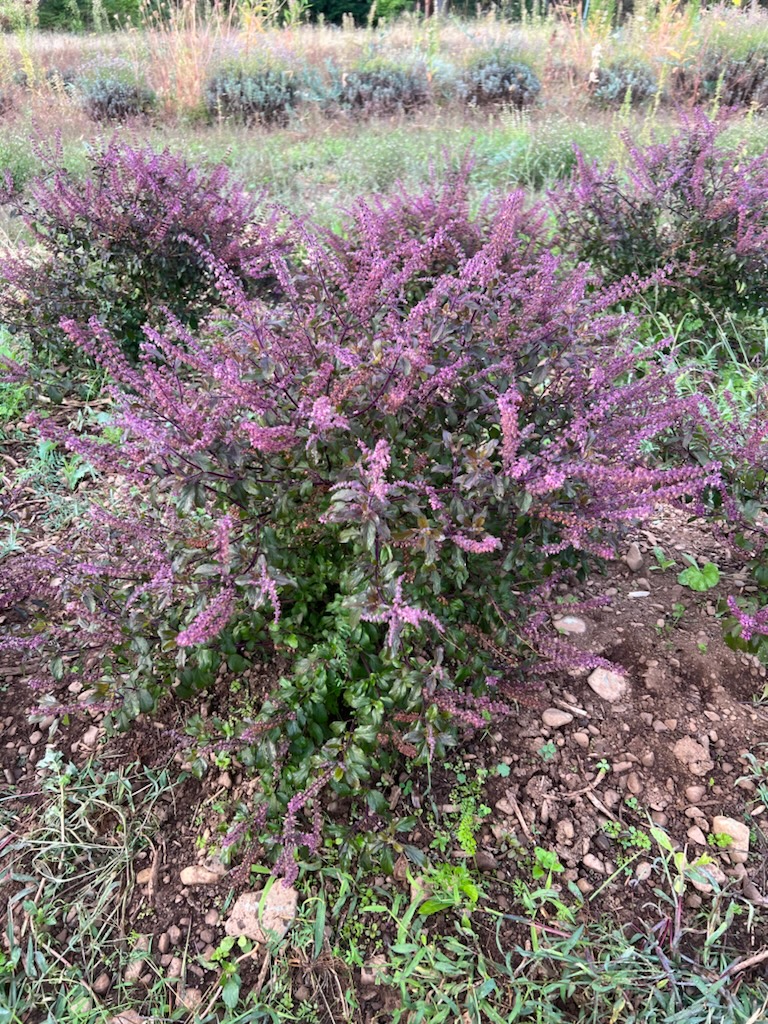
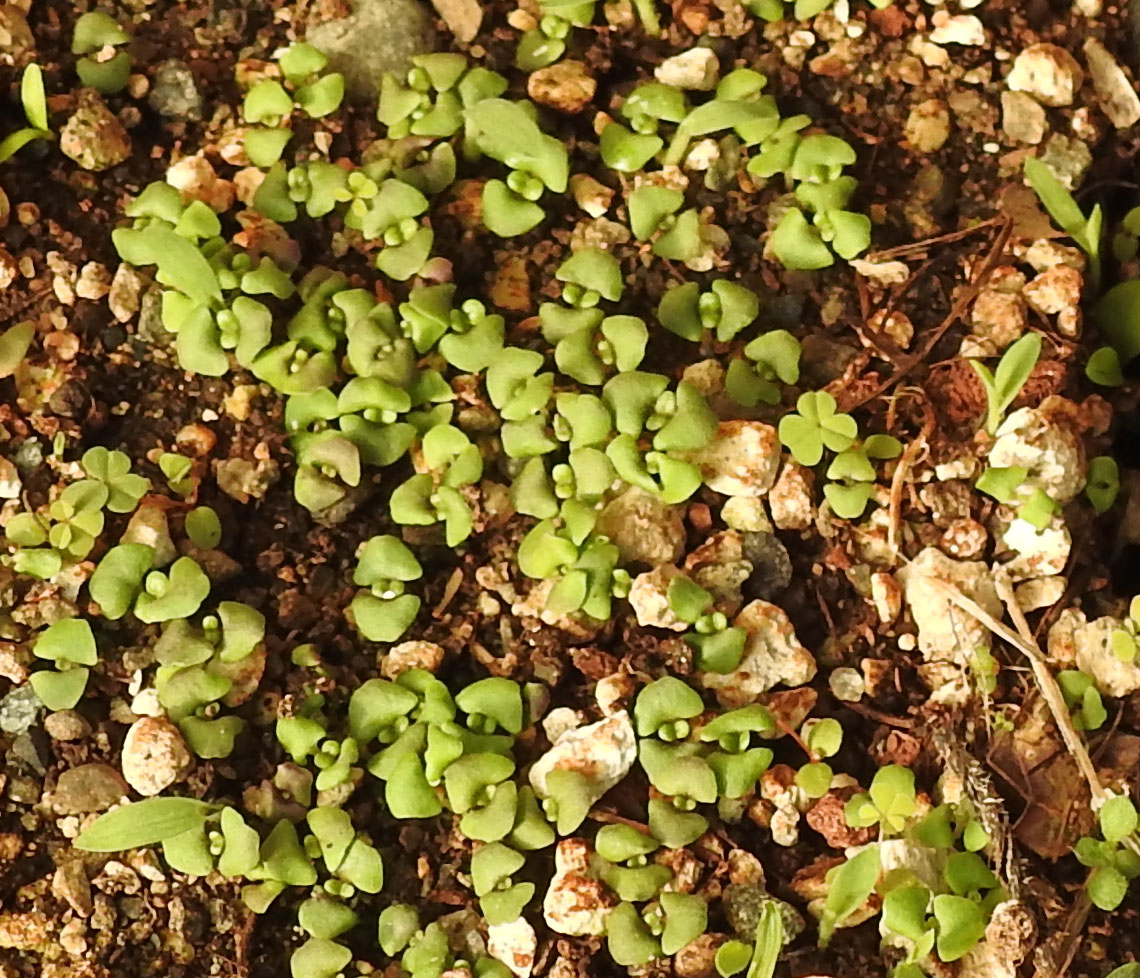
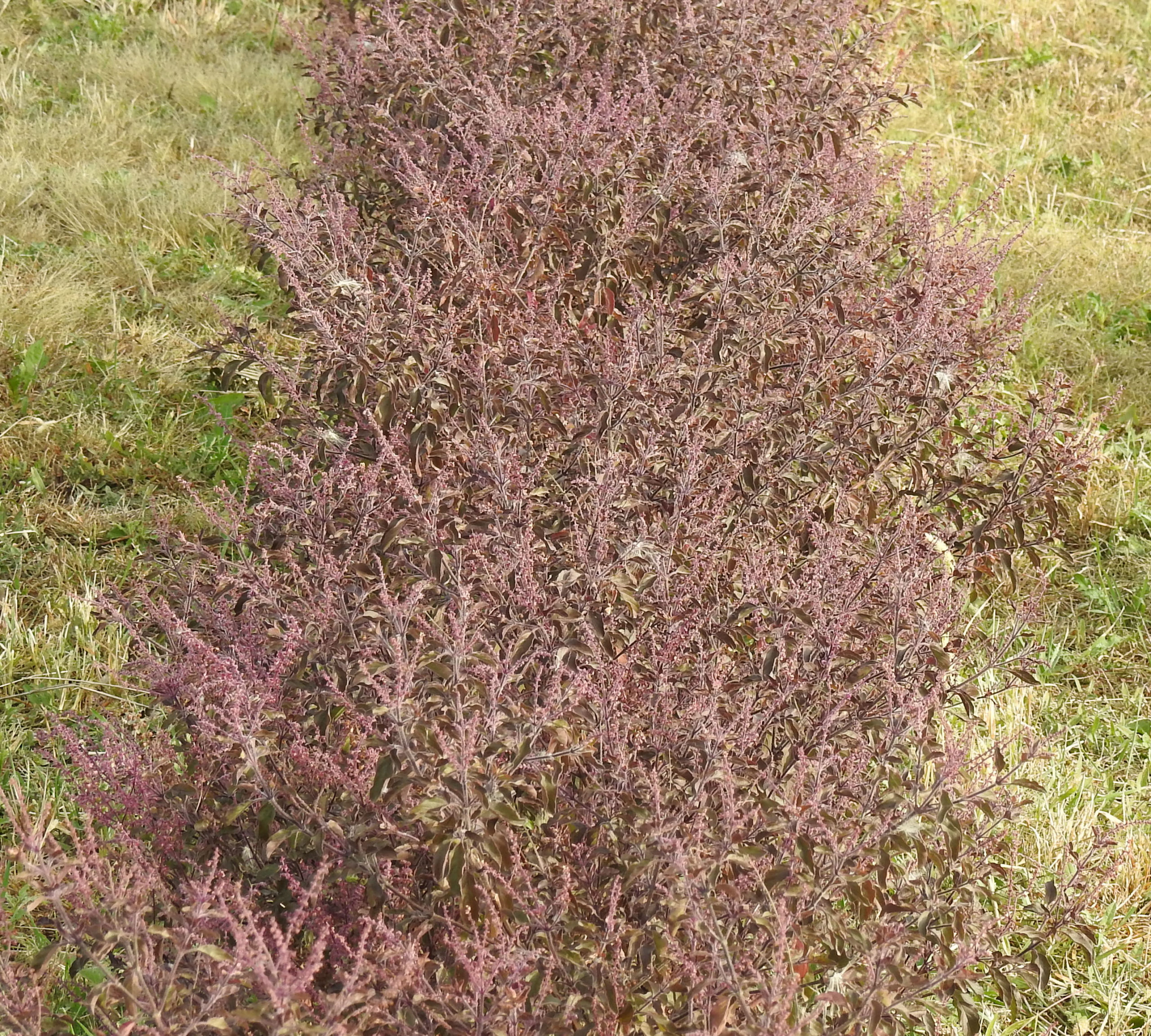
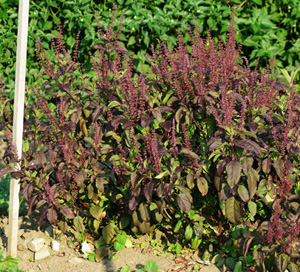
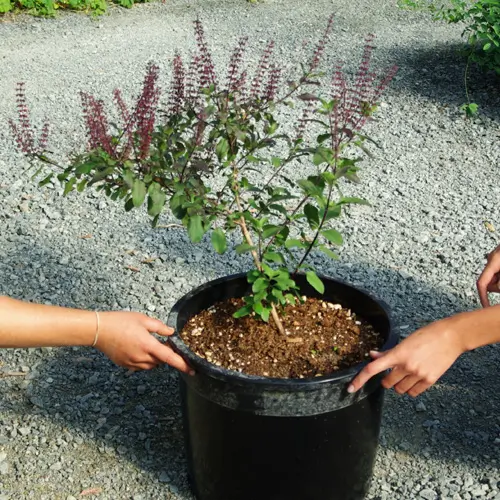
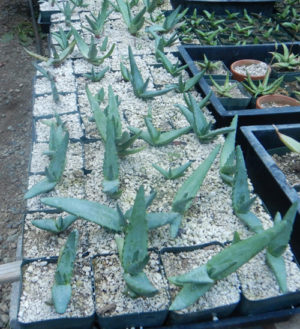
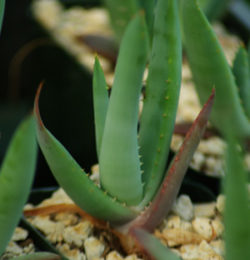
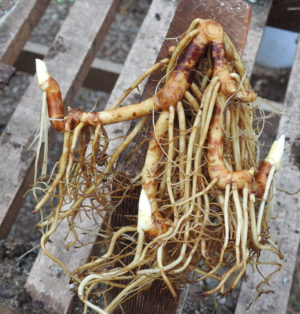
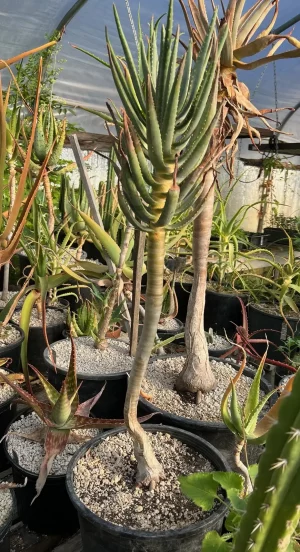
Kendra Chialastri (verified owner) –
More of a question than review, I bought this potted tulsi and living in the pnw (newbie here to both the area and container gardening), brought it in some weeks back before the cold settled in below 40 degrees, it’s stopped producing and wondering if there’s anything I can do to save it or when the production stops is the plant just dead and unsalvageable at that/this point?
I will say that it came packaged well and transplanted well until I brought it back indoors to keep from the frost killing it but seems to be dying on me 🙁 Thankful for any input!
Upvote if this was helpful (0) Downvote if this was not helpful (0) Watch Unwatch Flag for removal
Richo Cech –
Hello Kendra,
Thanks for staying in touch. All the growers I know in this part of the world grow tulsi as a summer annual. See “Growing Plant Medicine Vol 2” for good ways to grow and utilize this incredible tea herb. The best way to keep it through the winter is in a tropical greenhouse. Some individuals seem to overwinter better than others and might make it through in a bright window. Once they start to fade, its usually over.
Richo
Upvote if this was helpful (0) Downvote if this was not helpful (0) Flag for removal
Question
Yaaminu –
Does this plant survive in north Dallas like McKinney
Upvote if this was helpful (0) Downvote if this was not helpful (0) Watch Unwatch Flag for removal
Richo Cech –
Hello Yaaminu, This plant acts like a summer annual in most places in the USA. It loves sun and heat. Richo
Upvote if this was helpful (0) Downvote if this was not helpful (0) Flag for removal
Dr Shruti –
Does this Plant survive in Bay Area, CA. It gets chilly in the winters. Also do you send sampling too other than seeds. How long does it take to ship?
Upvote if this was helpful (0) Downvote if this was not helpful (0) Flag for removal
Richo Cech –
Hello Dr. Shruti, Thank you for writing. It is unlikely that the Krsna Tulsi will overwinter anywhere except in the tropics, where there is no winter. We have no samples, only the seeds, plants and books as shown on this website. Plant orders made today ship in June. All the best, richo
Upvote if this was helpful (0) Downvote if this was not helpful (0) Flag for removal
Jason –
I am a big fan of this plant, received the seeds from Strictly Medicinal.
It does well in GA (Zone 8A), grows quite strongly in the heat and humidity.
I am curious how deep the taproots go in the wild, one of mine send roots through holes in its pot, I couldnt lift the pot!
Upvote if this was helpful (0) Downvote if this was not helpful (0) Watch Unwatch Flag for removal
Richo Cech –
Hi Jason,
Thanks for your positive note. All projects started with Tulsi seem to work out well. The plant is indeed taprooted and the root is used in local medicine, also dried and drilled to make beads. The taproots might go to a foot or more. Mine generally get frosted out before I have a chance to see what they would do when tropically perennialized. richo
Upvote if this was helpful (1) Downvote if this was not helpful (0) Flag for removal
Question
Judy –
What size pot is your $8.50 Holy Basil pant?
Upvote if this was helpful (0) Downvote if this was not helpful (0) Watch Unwatch Flag for removal
Richo Cech –
Hi Judy,
Thanks for contacting! These are still in production and we hope to have them for shipment starting in April. We have several different size pots we use and we are not cookie-cutter propagators. These will probably be in 3 by 5 inch pots. We recommend up-potting to gallon size on receipt.
Richo
Upvote if this was helpful (0) Downvote if this was not helpful (0) Flag for removal
Question
lisamdmalmgren –
Can I grow this in a pot on my patio and bring inside in the fall. I live in zone 4 in MN.
Lisa
Upvote if this was helpful (0) Downvote if this was not helpful (0) Watch Unwatch Flag for removal
Richo Cech –
Hi Lisa, Technically Krishna Tulsi is a perennial. It requires warmth, good air circulation, and at least 6 hours of direct sunlight daily to thrive. So in practical terms, it is best to enjoy it in the moment in the summer garden or on the patio as a potted plant. We have lovely Krishna Tulsi plants in stock to send you right now. Richo
Upvote if this was helpful (0) Downvote if this was not helpful (0) Flag for removal
Carlene Jackson –
Do these plants die back in the frost but com back from the roots in the spring?
Upvote if this was helpful (0) Downvote if this was not helpful (0) Watch Unwatch Flag for removal
Richo Cech –
Hello Carlene, These are tender perennials, in other words once they experience frost they’re gone. We seed them an ew each spring. Richo
Upvote if this was helpful (0) Downvote if this was not helpful (0) Flag for removal
Question
Susan Bowers –
I Live in Hansville Washington zone 8 a will they survive year round here or do they need to be in the green house for the winter
Upvote if this was helpful (0) Downvote if this was not helpful (0) Watch Unwatch Flag for removal
Richo Cech –
Hi Susan! If you click on the picture then the monograph comes up and shows that these are perennial in a zone 10 to 12 so a zone 8 is not warm enough. I’m overwintering several hundred in a heated greenhouse under lights–they seem to do well that way. r
Upvote if this was helpful (0) Downvote if this was not helpful (0) Flag for removal
Shivani –
At what stage does it turn Purple? Mine is growing so very well from seeds I bought from you .. its quite young only 3 months old but has just absolutely gorgeous leaves! I am not in a hurry but just curious when the color typically changes? Thanks for the fabulous seeds! My temperate Tulsi and Vana also are doing very well, though Vana is slower going here (10b Northern Cali) for me. Thanks.
Upvote if this was helpful (0) Downvote if this was not helpful (0) Flag for removal
Richo Cech –
the krsna tends toward purple and its not an absolute purple like you’d get in a commercial purple ruffles basil or some such which is pretty but doesn’t have the right phytochemistry. the krsna goes more purple as it matures and the flowers are very dark. r
Upvote if this was helpful (0) Downvote if this was not helpful (0) Flag for removal
Sarah Faichney –
Hi Richo,
What mpsoil temperature does Krishna like? Is there a minimum temperature Krishna or the other tropical Holy Basils tolerate?
Thank you,
Sarah
Upvote if this was helpful (0) Downvote if this was not helpful (0) Watch Unwatch Flag for removal
Richo Cech –
The only true cutoff is 32 degrees F. We had a 100 degree day here 2 days back and the Krishna tulsi really increased that day. Any of the tropical tulsis are going to suffer outside until tomato-growing weather is on. richo
Upvote if this was helpful (0) Downvote if this was not helpful (0) Flag for removal
Question
Valerie Ramos –
What is your preferred choice of Tulsi?
Upvote if this was helpful (0) Downvote if this was not helpful (0) Watch Unwatch Flag for removal
Admin Richo Cech –
Hi Valerie,
I find the Amrita Tulsi to be superior. This year I planted out every type, and although the physical characteristics of Amrita and Rama are very close, the Amrita outgrew the Rama (superior genetic vigor). I also really do like the Krishna, although the yield is relatively low.
Richo
Upvote if this was helpful (1) Downvote if this was not helpful (0) Flag for removal